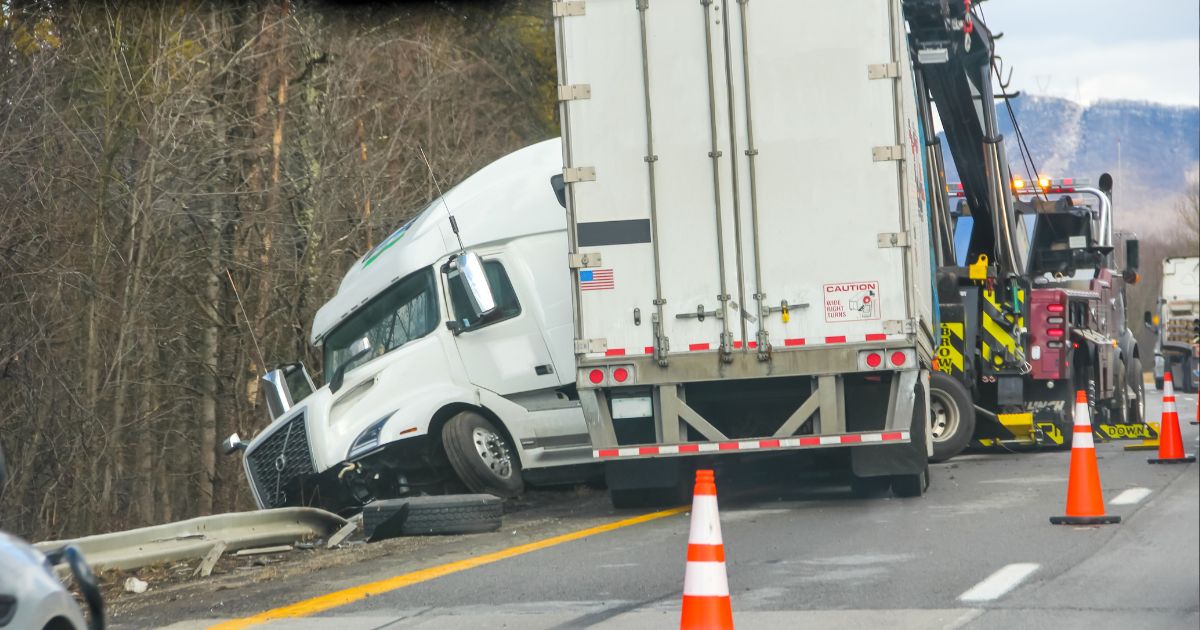
How to Safely Handle Tailgating (with 6 important tips)
We've all experienced the frustrating sensation of a vehicle tailgating us on the road.
Tailgating means driving too closely and leaving insufficient space behind another vehicle.
Not only can this behavior make the affected driver very stressed, but it also poses serious safety risks for everyone present.
An ordinary vehicle driving at 55 mph takes around 5 seconds to stop, according to the National Highway Traffic Safety Administration (NHTSA).
In other words, a vehicle at 55 mph may travel more than 300 before it stops due to the time it would take a driver to become aware of the danger.
Let’s take a closer look at the tailgating concept.
Tailgating from the perspective of a trucker
Tailgating is similar to driving very closely behind another vehicle. Imagine you're in a line of cars, and the car behind you is so near that it feels uncomfortable. Well, that's tailgating!
Truckers and trucks aren't fans of tailgating because it's not safe. Just like how we need room to move around without bumping into each other, trucks need space on the road. When someone tailgates, there's not enough space for the truck to stop quickly if something unexpected happens.
Truck drivers handle big vehicles that require more time to stop than regular cars. It's like when you ride your bike—you can't stop immediately. So, if a truck is tailgating another vehicle and that vehicle stops suddenly, the truck might collide with it.
Tailgating isn't a wise choice for anyone on the road. It can lead to truck driver accidents and harm people. Therefore, when you're driving, make sure to maintain a safe distance from the vehicle in front of you. This is like providing everyone enough space to move safely on the road!

The dangers of tailgating
Tailgating is one of the easiest ways to cause a crash, which is why it’s so dangerous.
According to crash stats, almost one-third of all crashes are caused by tailgating, making up 9.8% of fatal incidents.
Other injuries linked with tailgating include spinal cord and traumatic brain injuries. The vertebrae of drivers or other passengers may fracture or get compressed due to collision forces, which could harm the spinal cord.
These injuries frequently result in paralysis and require intensive physical therapy. These types of accidents can also cause brain hematoma or hemorrhage, which may lead to brain malfunctions.
Let’s take a closer look at some other dangers that involve tailgating.
1. Reduced reaction time
Your vehicle needs time to come to a full stop. Not only that but our reflexes may not be heightened enough for us to press the brake on time.
You may not sense you’re in danger and need to brake before it’s too late, and if you are already too close to the vehicle in front of you, there is an additional risk of crashing into it.
If the vehicle in front of you brakes suddenly, it doesn’t leave you much time to process the information, hit the brakes, and for the vehicle to actually stop.
2. Limited visibility
Tailgating impairs your view of the road ahead, making it difficult to anticipate changes in traffic flow.
You won’t be able to know when a pedestrian is crossing the street, or a pothole in the road, which could make the driver in front brake suddenly and not leave you with enough time to react.
Furthermore, if you are driving at night, your headlights will reflect in their rear mirror, affecting their visibility. The reflections get worse the closer you get to them, so keeping a safe distance is essential for both parties involved.
3. Chain reactions
If the vehicle in front comes to a sudden halt, tailgating reduces the time you have to brake. This can lead to a chain reaction, causing multiple vehicles to crash.
Understanding that tailgating can harm or be potentially fatal for multiple people is very important.
Essentially, any time you are driving, you are responsible for your own life and safety, but also the lives of others, so avoiding this behavior can even be life-saving.
Six tips for responsibly avoiding tailgating
You may very easily find yourself in a situation where you’re being tailgated. This can stress you out and even pressure you to speed up. Here are six things you should do instead.
1. The two-second rule
Always create a “safety cushion.” This means there should always be a gap between two vehicles of at least two seconds. This will allow you to react timely and avoid potential accidents.
Increase this gap during poor weather conditions, at night, or driving at higher speeds. If you’re unsure how to tell the distance is two seconds, you can choose a fixed point on the road, like a sign or a tree.
When the vehicle in front passes it, start counting: "One-thousand-one, one-thousand-two." If you pass the landmark before finishing, you're following too closely. Remember to increase distance in heavy traffic.
Similarly to previous situations, you should increase the “safety cushion” when the road is congested to allow for smoother lane changes and stops.
Remember that trucks and other large vehicles need more time to come to a complete stop, so leave a five to six-second cushion if you’re driving a truck.
2. Be patient and courteous
Losing your cool in traffic is easy when another vehicle is tailgating you. This may make you engage in aggressive behavior or brake-checking.
Try to avoid reacting impulsively and based on your emotions. It's important to prioritize safety and maintain a level-headed approach.
3. Don't brake abruptly
Sudden braking can increase the risk of a collision. Try using your tail lights to signal your intentions.
You may feel like brake-checking will teach them a lesson, but it only puts you at risk of an accident. Not only that, but it can also provoke the tailgater to become even more aggressive.
4. Change lanes safely
Change lanes to let the tailgater pass. This is your best chance of leaving this dangerous situation.
To indicate your intention and ensure you aren’t exposing yourself to an even riskier scenario, always use your turn signals and change lanes when it’s safe.
5. Pull over if necessary
If the tailgater continues to be aggressive or unsafe, consider pulling over safely to allow them to pass.
Understandably, this may take some time and elongate your route by a few minutes, but if there is no other option, this can potentially save your life.
Remember that it’s always better to arrive a few minutes later than to risk not arriving at all.
6. Consider reporting aggressive behavior
You may have escaped this very dangerous situation, but the tailgater may continue disrupting other vehicles.
This behavior is, in fact, so risky that it’s illegal and can get you fines up to $1000 and up to 8 points, depending on the state.
Reporting this behavior could help prevent major accidents and even save lives, so consider it.
Three important things to avoid if you’re being tailgated
To avoid further risks, here are some key things you shouldn’t do when dealing with a tailgater.
1. Don’t speed up
Avoid accelerating under pressure to increase the distance between you and the vehicle in front of you.
This could result in you accidentally exceeding the speed limit and encouraging the close chaser to go faster. Instead, keep moving at a steady, safe speed.
2. Avoid slowing down
Doing so will only enhance the likelihood of an accident or incite road rage. Never use your car to pressure another driver to reduce their speed.
Similarly to brake-checking, slowing down can also increase the risk of rear-end collisions. Continue driving at a steady pace.
3. Avoid focusing on the rear mirror
Although you may feel tempted to look at the person tailgating you, doing so would divert your focus from the road. Keep your attention on the road and avoid becoming sidetracked by the other motorist.
To sum it up
Tailgating is sometimes discarded as being annoying, but the risks of this behavior are much higher than that. This practice can be life-threatening and is linked to some of the most fatal accidents.
By practicing patience while keeping a safe distance, following the speed limit, and avoiding braking abruptly, you can contribute to a safer driving environment and prevent accidents.
This post was written in collaboration with Super Ego Holding.

Best 11 Trucking Podcasts We Bet You’ll Actually Enjoy
Country playlists and radio talk had their charm, but podcasts have completely changed the game for drivers. Check out this list of the 11 best trucking podcasts.

6 Practical Ways To Manage Truck Downtime Before It Costs You
Truck downtime can drain your revenue and hurt customer satisfaction. Discover simple, proactive steps to reduce downtime, improve fleet performance, and keep your trucks on the road where they belong.

Driver’s Knee Got You Down? Here’s How to Fight Back
Spending long hours on the road can lead to knee pain, known as Driver’s Knee. Learn how truckers can prevent and manage this common issue.

